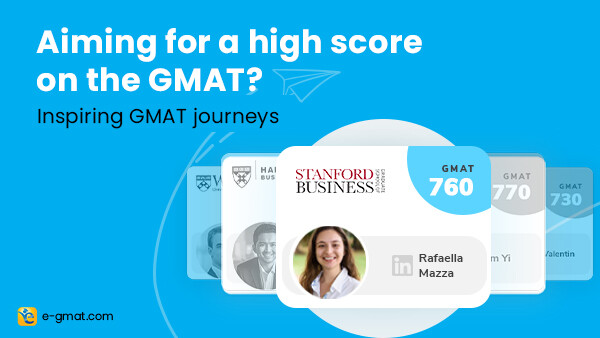In this article, we’ll look at the solution to the 700-level GMAT Official Guide critical reasoning question. We have analyzed the 5 answer choices and arrived at the correct choice through 4 steps:
- Understanding the Argument
- Vizualization of Argument
- Prethinking
- Answer Choice Analysis
General Information on the Official Guide CR question
- Difficulty Level: Hard (85% – Hard)
- Accuracy: 54% (GC)
- Most Common Incorrect option choice: 30% B, 12%E and 15%D (GC)
- Question Type: Assumption
- Source: GMAT Official Guide 10
Question: A proposed change to federal income tax laws…
A proposed change to federal income tax laws would eliminate deductions from taxable income for donations a taxpayer has made to charitable and educational institutions. If this change were adopted, wealthy individuals would no longer be permitted such deductions. Therefore, many charitable and educational institutions would have to reduce services, and some would have to close their doors.
The argument above assumes which of the following?
[Refer to the GMAT Official Guide for options]
Solution: A proposed change to federal income tax laws…
Time for an assumption question. We need to identify the missing linkages in the passage and find the correct assumption from them. Let us first understand the argument.
Understanding the argument
- A proposed change to federal income tax laws would eliminate deductions from taxable income for donations a taxpayer has made to charitable and educational institutions.
The passage states that a change has been proposed to federal income tax laws (FITL).
As per this proposed change, there will be no deductions from taxable income for donations made to charitable and educational institutions.
In other words, because of this proposed change, the donations made will be a part of taxable income, and hence the income tax would increase.
- If this change were adopted, wealthy individuals would no longer be permitted such deductions.
The passage now presents an impact of this change.
If this change is accepted, wealthy individuals will not get deductions on their taxable income for the donations made to charitable and educational institutions.
Thus, after this change is accepted, wealthy individuals will not get tax benefits on donations made to charitable and educational institutions.
- Therefore, many charitable and educational institutions would have to reduce services, and some would have to close their doors.
Conclusion- The author concludes that many charitable and educational institutions would be forced to reduce services or close down as a result of this change.
Visualizing the Argument
Conclusion: Many charitable and educational institutions would have to reduce services, and some would have to close their doors.
Let us visualize this conclusion properly. Here are some very important aspects to understand about the conclusion.
- The conclusion is about many charitable and educational institutions. It is not about all such institutions.
- As per the conclusion, while many such institutions would have to reduce the services that they provide, some of them may have to discontinue their operations.
- Hence, the conclusion does not say that all such institutions will have to close down.
Logic: On what basis is this conclusion being made?
The conclusion is being made considering that wealthy individuals will not get tax benefits on donations made to such institutions if the proposed change is accepted.
So, the author is considering that many wealthy individuals will discontinue their donations because they will no longer get tax benefits on them.
Prethinking
We need to find an assumption behind the author’s conclusion. In other words, we need to find a missing logical piece
- which supports the conclusion
- which has to be true for the conclusion to hold, i.e., a must be true condition
So let us start by creating the Falsification Question:
In what scenario will any charitable and educational institutions not have to reduce services or close their doors?
Given that:
- Wealthy individuals will not get tax benefits on donations made to such institutes if the proposed change is accepted.
Falsification scenario 1- What if a significant number of wealthy individuals do not donate money to such charitable and educational institutes for the sake of tax benefit?
In such a scenario, discontinuation of tax benefits will not affect their donations. Hence, such institutes will continue to get donations from significant number of these wealthy individuals, and the conclusion will break.
Assumption 1- Tax benefit on donations is one of the primary reasons for a significant number of wealthy individuals to donate money to such institutes.
Falsification scenario 2-What if a significant portion of donation received by such institutions is contributed by average people (in terms of their wealth, i.e., people who are not wealthy) who do not get any significant tax saving on their small individual contribution.
For example, while a wealthy person may be contributing $1000 monthly, 100 average people may be contributing $10 each. In such a case, while there will be significant tax savings for the wealthy individual, there will not be any significant tax savings for the average people.
In such a case, the proposed change will not have a significant impact on donations being made to these institutes.
Assumption 2- A significant portion of donation for these institutions does not come from average people who do not get any significant tax benefits on the small contributions that they make.
Answer Choice Analysis
ChoiceA: Without incentives offered by federal income tax laws, at least some wealthy individuals would not donate as much money to charitable and educational institutions as they otherwise would have.
Correct:
This choice is in line with our Assumption 1.
It has been worded differently but conveys the same meaning.
It conveys that because of the change, at least some wealthy individuals will reduce their donations to such institutions.
Thus, as per this choice, the proposed change will result in at least some reduction in donations received by these institutes. In that case, their operations will be impacted.
Hence, it is a correct assumption.
Now, you may ask what is the effect of “at least” here. Is choice A a must be true condition? Let’s see-
If we negate choice A, it will be –
Without incentives offered by federal income tax laws, no wealthy individuals would not donate as much money to charitable and educational institutions as they otherwise would have.
In simple words, even if tax benefits are removed, every wealthy individual will continue to contribute as much money to to charitable and educational institutions as they were doing earlier.
In that case, there is no reason to think that the donations received will reduce because of the proposed change. Hence, the conclusion will break.
Hence, choice A presents a must be true condition.
Choice B: Money contributed by individuals who make their donations because of provisions in the federal tax laws provides the only source of funding for many charitable and educational institutions.
Incorrect:
This is a very interesting and close answer choice.
Information given in this choice definitely supports the conclusion because if donations made by people interested in tax savings from donations is the only source of funding, then the proposed change will completely stop the fundings of these institutions, i.e., the funding will reduce to zero, and that will definitely affect their operation.
However, is choice B a must be true condition? No.
Let’s understand-
Let’s negate choice B-
Money contributed by individuals who make their donations because of provisions in the federal tax laws does not provide the only source of funding for many charitable and educational institutions.
In simple words, these institutions get donations from people who are not donating for the sake of getting tax benefits also.
- If we have to take an example, we can say that x% of donors are people who are donating for getting the tax benefits, and x is not zero.
- So, there are x% donors who will not be affected by the removal of tax benefits while remaining will get affected.
Does that mean that the proposed law will not impact the donations significantly? Clearly No.
What if donation given by x% donors constitutes an insignificant share of total donations, and the significant share still comes from people who donate to get tax benefits?
- For example, what if the x% donors donate only 2% of the total amount and the rest 98% comes from people who donate to get tax benefits.
In such a case, even though people who donate to get tax benefits do not form the only source of funding, the donations will be reduced significantly if the proposed change is accepted, and the institutions will suffer.
Hence, even if we negate choice B, our conclusion does not break.
Thus, choice B is not a must be true condition and hence cannot be a correct assumption.
Choice C: The primary reason for not adopting the proposed change in the federal income tax laws cited above is to protect wealthy individuals from having to pay higher taxes.
Incorrect:
This choice talks about the main reason for not adopting the proposed change.
However, the conclusion is for the scenario in which the proposed change has been adopted.
Hence, the information given in this choice is irrelevant.
Choice D: Wealthy individuals who donate money to charitable and educational institutions are the only individuals who donate money to such institutions.
Incorrect:
While this choice supports the conclusion, it is not a must be true condition.
Let’s negate it to check-
Wealthy individuals who donate money to charitable and educational institutions are not the only individuals who donate money to such institutions.
Does it break our conclusion- No.
Even if wealthy individuals are not the only individuals who donate money to such institutions, they may be contributing a significant portion.
Hence, with the acceptance of the proposed change, if these wealthy individuals reduce their donations significantly, then the institutions will suffer.
Hence, choice D – when negated- does not break the conclusion.
Hence, it is not the correct choice.
Choice E: Income tax laws should be changed to make donations to charitable and educational institutions the only permissible deductions from taxable income.
Incorrect:
This choice presents another recommendation in income tax laws.
However, this recommendation does not affect our conclusion in any way and thus is irrelevant.
Core Learnings from this question:
- Always understand what the conclusion is about. The conclusion here is about many institutions and not all institutions.
- Be careful while analyzing answer choices. An answer choice that is not must be true can be a strengthener but not an assumption.
- Look out for words such as only, some, all, most etc., and understand the impact that they have on meaning.
If you are planning to take the GMAT, we can help you with a personalized study plan and give you access to quality online content to prepare. Write to us at acethegmat@e-gmat.com. We are the most reviewed GMAT prep company on gmatclub with more than 2400 reviews and are the only prep company that has delivered more than 700+ scores than any other GMAT club partner. Why don’t you take a free trial and judge for yourself?


![[GMAT OG solution] A proposed change to federal income tax laws…](https://cdn.e-gmat.com/blogs/wp-content/uploads/2021/11/a-proposed-change-to-federal-income-tax-laws.png)








